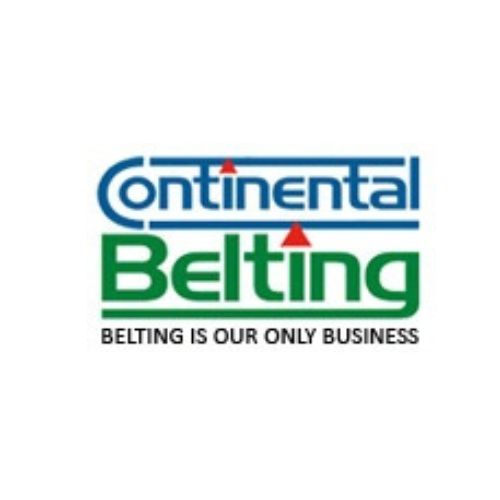The right food grade conveyor belt can be useful in the food industry to manufacture high-quality products. For example, the confectionery sector needs high-grade conveyor belts to handle different products such as chocolates, sweets, etc.
The food sector has tight requirements for handling and hygiene. Everything that comes into direct touch with food must be certified for food manufacturing. Otherwise, the material can transmit contaminants into the food, affecting flavor, fragrance, durability, and, in the worst-case scenario, human health.
Various types of belt conveyors are nearly usually employed in a manufacturing line. Conveyors that come into direct touch with food must have a food-grade belt that is also designed for the specific type of food.
Material Selection
There is a wide range of materials and surface qualities available, therefore it is critical to pick the ideal one. If your manufacturing includes frozen items, you might consider using a TPU-coated belt with great elasticity at low temperatures. And if your bakery uses sticky materials like dough, a belt with strong release capabilities is essential to avoid spillage. Other belts have been surface-treated with TPO (Thermoplastic Polyolefin), which is free of PVC and has no phthalates or halogens.
It is good to check with your supplier to determine the optimal combination of materials and surface qualities for your specific application. Also, the complete belt conveyor must be certified for food processing, which may need a different design and material selection. In many circumstances, food grade conveyor belts are sufficient since they are the component that comes into direct touch with the food.
Cleaning techniques
Most food-grade belts are chemically resistant and withstand the most common cleaning solutions. To be on the safe side, consult the belt’s product data sheet for specific cleaning instructions for each belt type/material. Special antimicrobial belts prevent microorganisms from growing even in difficult-to-clean regions. The food is unaffected by the antimicrobial ingredient.
Accessories that increase efficiency
Numerous belt attachments can help you increase production efficiency, such as belt profiles that ensure that items are conveyed accurately even when the conveyor is slanted. Belt profiles are positioned transverse to the belt’s direction of travel. It is also feasible to install side supports along the belt to prevent products from rolling off the conveyor. When selecting accessories such as belt profiles, keep in mind that their qualities are identical to those of the conveyor belt.
Food Grade Conveyor Belt—Many Options, Not All Equal
When selecting a food-grade conveyor belt, it is crucial to recognize that not all belts are right for the purpose. A food-grade conveyor is an essential component of the sanitary conveyor system.
There are various food grade conveyor belt manufacturers and types, however, keep in mind that not all belts are the same. The checklist below will help you ask the appropriate questions when choosing the proper belt for your next food-grade conveyor system.
Tensioned or Non-Tensioned Food Grade Conveyor Belting
For the best access to the conveyor’s frame and interior components, use a conveyor system with a belt that requires no pre-tension. Tensionless food-grade belting fits loosely and may be lifted for complete access to the conveyor system. The conveyor’s easy access to internal components enables complete cleaning in situ (CIP), lowering the possibility of hazardous germs accumulating.
Look for belts that can self-track. Sprocket-driven positive tracking systems avoid mistracking and subsequent belt damage.
Food products come in all shapes and sizes, and they can be sticky, oily, greasy, wet, frozen, or steaming hot. The shape and temperature are important considerations while choosing the right belt type and design.
All blue belts are not the same.
Blue food grade conveyor belting is popular in food processing companies because of its hue. The blue tint makes it much simpler to see soil contaminants. There are two types of plastic belts: blue uniform solid surface and those with reinforcing strands. Non-homogeneous belts with reinforcing cords or fabric become torn or worn, exposing the reinforcements, which can absorb fluids and contain germs.
The end result is a source of pollution that is frequently difficult to identify and tough to clear. Belts consisting of many layers of materials, such as cloth and plastic, may separate, exposing the fabric and causing sanitary issues. Using a belt comprised of a single material minimizes these dangers. There are various blue food-grade conveyor belts available, but keep in mind that they are not all the same.
Modular Plastic Belting
Use modular plastic link style food grade conveyor belting where durability, cold or very warm conditions are required. Modular plastic provides optimal cleanliness, corrosion and abrasion resistance, and customizing options.
Plastic belting may be formed in materials that can transport products as cold as -50°F or as warm as 200°F. Belting designs include a nub top, flush grid, and a range of drive flight choices, allowing you to construct a belt for almost any culinary application.
Metal Mesh Belting.
When it is necessary to batter, bake, glaze, coat, chill, drain, dry, or wash a product, metal mesh food grade conveyor belting is the solution. Metal mesh belting is also transparent, metal detectable, and enables for tight transfers, facilitating the smooth transfer of tiny or fragile objects.
No matter your food processing application, you want to look for a belt that will keep your maintenance costs at a minimum and your food product safe.
